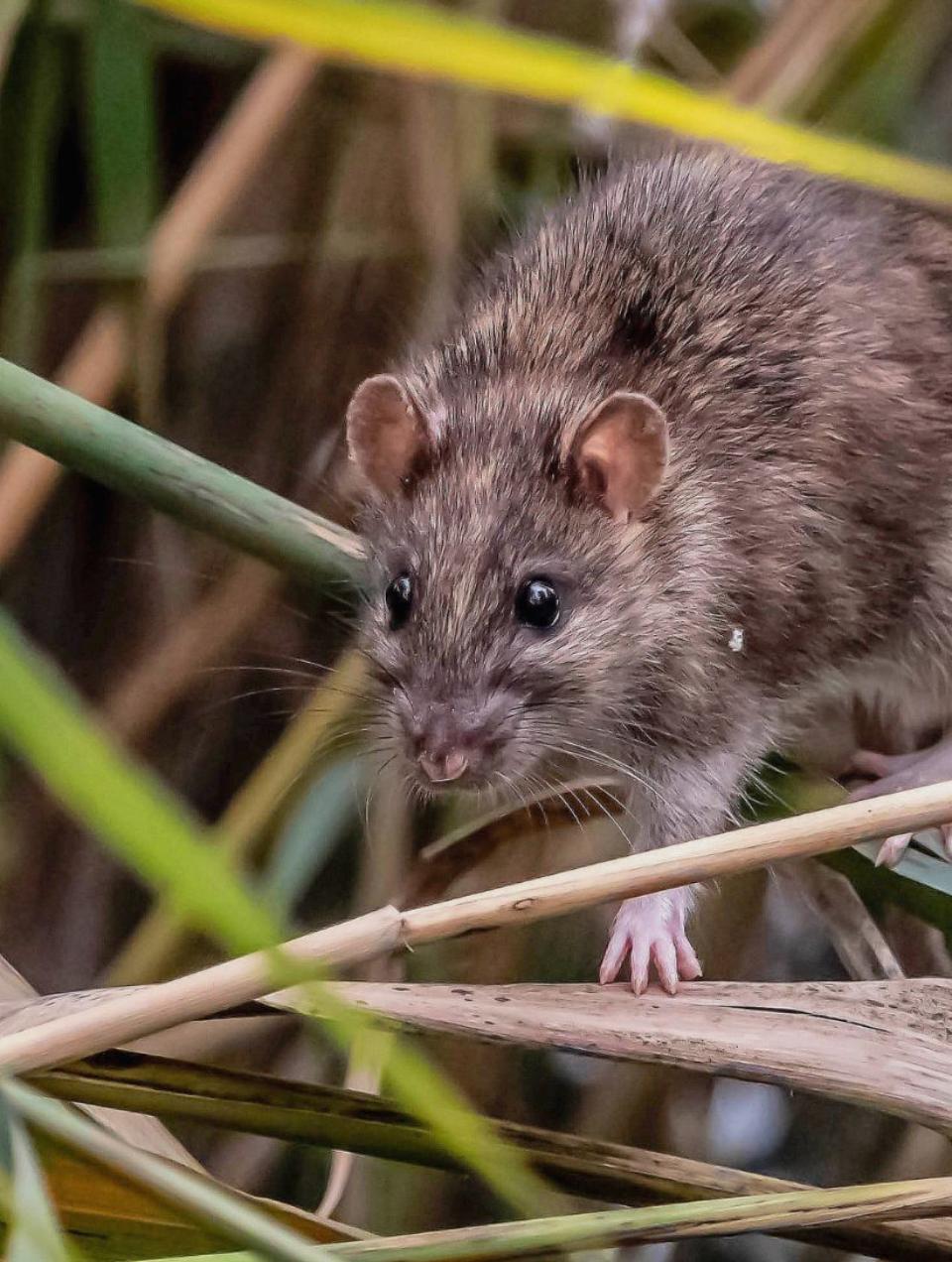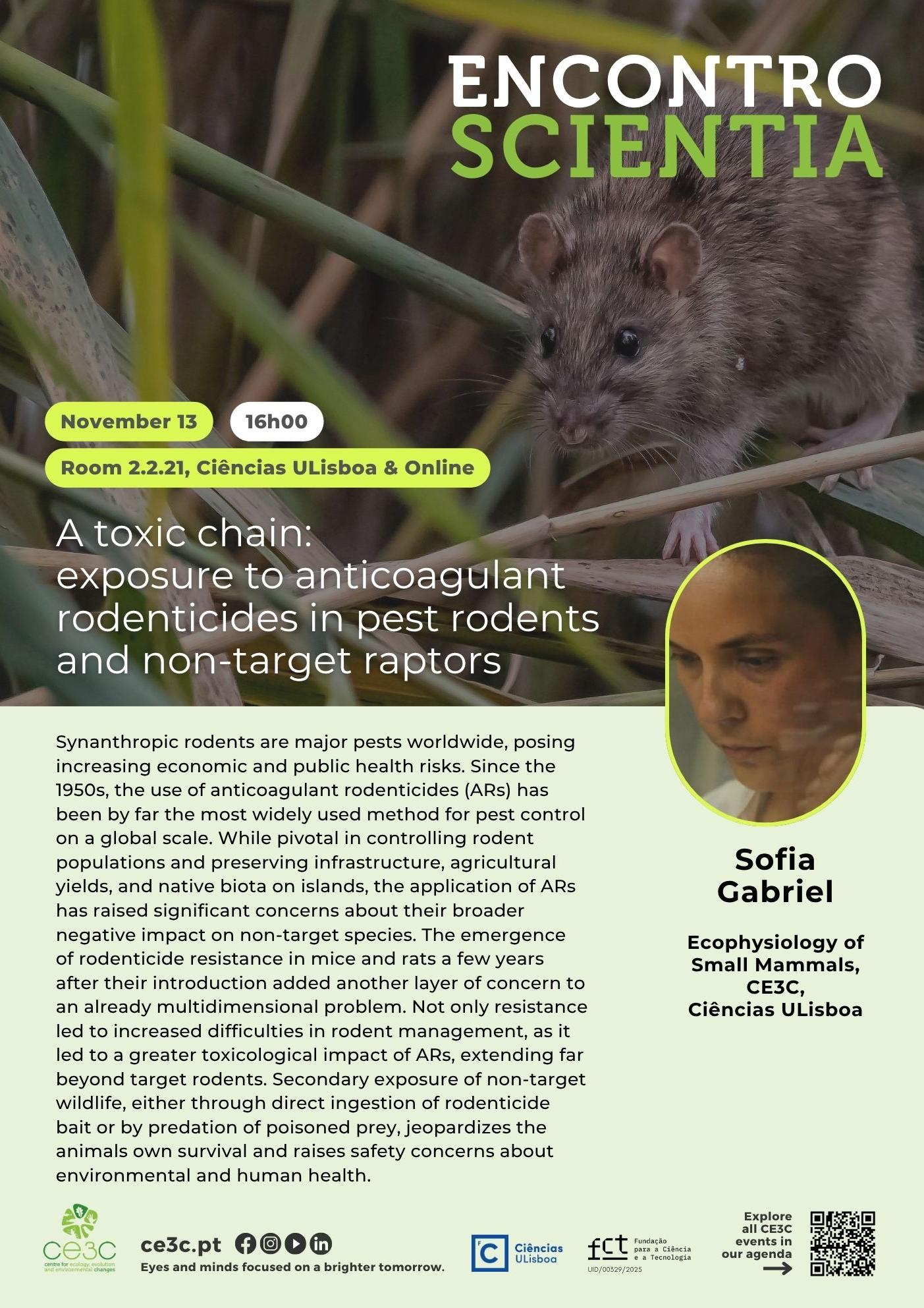-
Date:
13 Nov 2025
-
Location:
Room 2.2.21 - Faculty of Sciences of the University of Lisbon & Online
-
Schedule:
16h00 (Lisbon time), 15h00 (Azores time)
-
Lecturer or Responsible:
Sofia Gabriel (CE3C-ESM)

Online access • LINK
Synanthropic rodents are major pests worldwide, posing increasing economic and public health risks. Since the 1950s, the use of anticoagulant rodenticides (ARs) has been by far the most widely used method for pest control on a global scale. While pivotal in controlling rodent populations and preserving infrastructure, agricultural yields, and native biota on islands, the application of ARs has raised significant concerns about their broader negative impact on non-target species. The emergence of rodenticide resistance in mice and rats a few years after their introduction added another layer of concern to an already multidimensional problem. Not only resistance led to increased difficulties in rodent management, as it led to a greater toxicological impact of ARs, extending far beyond target rodents. Secondary exposure of non-target wildlife, either through direct ingestion of rodenticide bait or by predation of poisoned prey, jeopardizes the animals own survival and raises safety concerns about environmental and human health.

